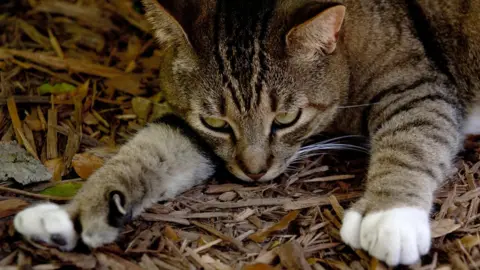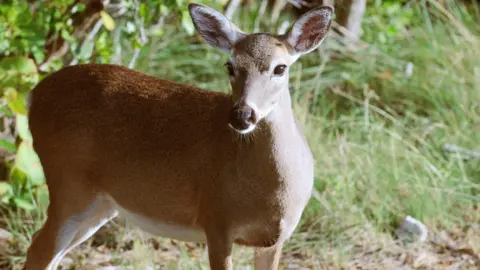Hurricane Irma: Rare animals survive devastating storm
 Reuters
ReutersAs Hurricane Irma cut a devastating path through the Florida Keys islands, a colony of six-toed cats appears to have survived without a scratch.
The furry felines, descended from a pet owned by Ernest Hemingway, ignored orders to evacuate as the winds swept through the writer's historic house.
Endangered deer native to the islands also appear to have survived the storm.
Florida Keys and western parts of the state bore the brunt of Irma in the US, with winds of up to 120mph (192km/h).
"Save the cats. Get all the cats in the car and take off!" the late Mr Hemingway's granddaughter, Mariel, urged in a video posted on Friday.
Staff responsible for maintaining the Hemingway Home Museum in Key West, Florida, chose to ride out the storm over the weekend in the property with 54 of their feline friends.
"We took them inside that fortress with us and we had 10 employees stay here on site," Dave Gonzales, curator of the Ernest Hemingway Home and Museum on the island of Key West told broadcaster NBC.
"We're comfortable with them; they're comfortable with us. We love them. They love us. We all hung out last night together," he added.
The colony of six-toed cats descended from a tomcat named Snow White that the acclaimed US author adopted from a ship's captain while living at the property in the 1930s.
 Getty Images
Getty ImagesSeparately, several endangered deer found only in the lower Florida Keys were spotted on Monday, easing fears over the fate of the species following Hurricane Irma's path of destruction.
The Key Deer, which is the smallest subspecies of the North American white-tailed deer, reach about 3ft (1m) tall when measured at the shoulder.
The majority of the deer live on the islands of Big Pine Key and No Name Key, according to the US Fish and Wildlife Service.
Experts have said that it was too early to say how the overall population of about 1,000 Key deer had fared.
 Reuters
Reuters